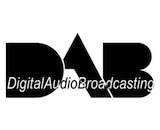 Two experts from the European Broadcasting Union wrote an article for Radio World about some of the ideas that have emerged as central components of successful digital radio adoption. David Fernández Quijada, senior media analyst, and head of radio Christian Vogg dubbed those common threads the “five Cs” formula:
Two experts from the European Broadcasting Union wrote an article for Radio World about some of the ideas that have emerged as central components of successful digital radio adoption. David Fernández Quijada, senior media analyst, and head of radio Christian Vogg dubbed those common threads the “five Cs” formula:
- Coverage should be at least as comprehensive as analog radio.
- Content on digital channels should have added value for listeners over the analog ones.
- Costs to broadcasters can be managed by making the transition period as brief as possible while allowing enough time to make a smooth switch.
- Collaboration among broadcasters on the technology side can help “to find incentives for everybody.”
- Communication with the public should be clear and simple to avoid confusion or misunderstanding about the new technology.
Those findings were based on the progress already being made for the digital transitions in Norway, Switzerland, and the UK, which are among the farthest along with their switches. Quijada and Vogg noted that even in those markets, there’s still more work to be done to complete the change. “It is now up to us broadcasters to convince the nonbelievers of the advantages of digital terrestrial radio,” they wrote. “We are optimistic that in the end, they too will get onboard and join us in rowing in the same direction.”
While much of the broadcast industry is optimistic about making the digital swap breezy, there are still some roadblocks on the consumer side. Ed Vaizey, the UK minister for culture, communications, and creative industries, observed that DAB has had slow adoption among listeners. “It’s a big ask for people with five or 10 FM radios in their house to go out and buy ten digital radios,” he said. “People are quite understandably wedded to their FM radio. People really love radio in this country.” He added that the government wouldn’t pull the trigger on the DAB transition until “all of the building blocks” are in place. Getting the right technology into the hands of listeners would seem to be one of those blocks.

In the UK, ‘confusion and misunderstanding’ is what has allowed many DAB radios to be sold: perhaps propaganda is what the industry wants. Would people swap to DAB if they knew the sound of almost every UK station was far worse than FM stereo, with most DAB stations now in mono? Would they be excited by DAB’s text feature if they knew that FM’s RDS system has had this for years – although for some reason UK broadcasters tend not to make use of it? Would they replace their FM portables if they knew that the battery life of DAB sets is far worse, and that the DAB signal descends to the sound of bubbling mud or disappear altogether as they carried their radio round the house?